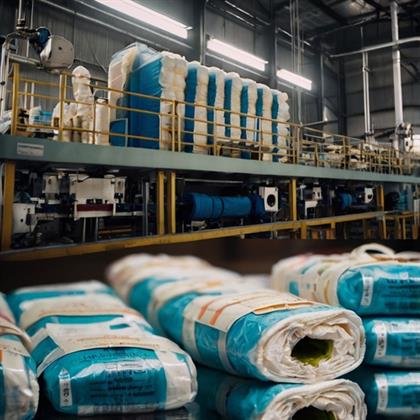
The Mobile and Wireless Backhaul Market is at the forefront of the telecommunications industry, evolving rapidly to meet the increasing demand for high-speed and reliable connectivity. As we approach 2031, several key trends and innovations are set to shape this market, offering new opportunities and addressing ongoing challenges.

The Transition to 5G and Beyond
The transition to 5G has been a game-changer for the Mobile and Wireless Backhaul Market. 5G technology offers significantly faster speeds, lower latency, and the ability to handle a higher density of connected devices. By 2031, we will likely see the widespread deployment of 5G networks, with 6G technology beginning to emerge on the horizon. This evolution will bring about even greater improvements in speed, capacity, and efficiency, enabling a new generation of applications and services.
One of the critical aspects of 5G and future networks is the use of small cells and densification. Small cells bring the network closer to the user, reducing latency and increasing capacity. This densification requires robust backhaul solutions to connect these small cells to the core network efficiently.
The Role of Artificial Intelligence and Machine Learning
Artificial Intelligence (AI) and Machine Learning (ML) are playing an increasingly important role in the Mobile and Wireless Backhaul Market. These technologies enable network operators to optimize backhaul networks, predict and prevent potential issues, and enhance overall performance. By 2031, AI and ML will be integral to network management, helping to automate and streamline operations.
For example, AI can be used to analyze network traffic patterns and adjust backhaul capacity dynamically, ensuring that resources are allocated where they are needed most. ML algorithms can help detect and mitigate security threats in real-time, improving the resilience of backhaul networks.
Integration of Edge Computing
Edge computing is another significant trend that will shape the Mobile and Wireless Backhaul Market by 2031. By processing data closer to the source, edge computing reduces latency and improves the performance of data-intensive applications. This is particularly important for applications such as autonomous vehicles, smart cities, and industrial IoT, which require real-time processing and decision-making.
The integration of edge computing with backhaul networks will necessitate new architectural approaches. Distributed backhaul solutions that can handle the increased data traffic generated at the edge will be essential. This will also drive the need for more flexible and scalable backhaul infrastructures.
The Impact of IoT
The Internet of Things (IoT) is driving a massive increase in the number of connected devices, from smart home appliances to industrial sensors. By 2031, the IoT ecosystem will be even more expansive, with billions of devices connected worldwide. This growth will place unprecedented demands on backhaul networks, requiring them to support a diverse range of applications with varying data and latency requirements.
To accommodate this, network operators will need to deploy backhaul solutions that can scale efficiently and provide reliable connectivity for IoT devices. This includes both wired and wireless backhaul technologies, depending on the specific needs and locations of the devices.
Sustainable and Energy-Efficient Backhaul Solutions
As the Mobile and Wireless Backhaul Market grows, so does the need for sustainable and energy-efficient solutions. The increasing number of network nodes and the rising data traffic consume significant amounts of energy. By 2031, there will be a strong focus on developing green backhaul technologies that minimize energy consumption and reduce the carbon footprint of mobile networks.
Innovations in energy-efficient hardware, renewable energy sources, and intelligent power management systems will be crucial in achieving these sustainability goals. Network operators will also look to adopt more environmentally friendly practices in their operations and maintenance processes.
Conclusion
The Mobile and Wireless Backhaul Market is on the cusp of significant advancements as we approach 2031. The transition to 5G and the emergence of 6G technology, the integration of AI and edge computing, the proliferation of IoT devices, and the focus on sustainability are all key trends that will shape this market. As network operators and technology providers navigate these changes, they will need to invest in innovative solutions and collaborate closely to overcome challenges and seize new opportunities. The future of the Mobile and Wireless Backhaul Market promises to deliver faster, more reliable, and more sustainable connectivity, enabling a wide range of new applications and services.Top of Form
Leave a Reply
Related Products
You Might Like Also

Forecasting the Future of the Adult Diaper Market 2031
The Adult Diaper Market is set for transformative growth as we approach 2031. With increasing life expectancy and changing societal norms surrounding incontinence Read More

The Future of Advertising: In-Game Advertising Market 2031
The In-Game Advertising Market is on the verge of a transformative era as it continues to gain traction among advertisers looking to connect with consumers in engaging ways Read More

Carbon Black Market Outlook: Growth Prospects and Challenges by 2031
The Carbon Black Market is expected to grow steadily by 2031, spurred by increasing demand from industries like rubber, plastics, and paints. Carbon black Read More

The Energy Harvesting System Market is set to expand significantly by 2031, driven by advancements in technology and the increasing need for sustainable energy solutions Read More

The Future of the Steam Turbine Market by 2031
The Steam Turbine Market is on the cusp of a transformation, influenced by the global energy landscape's evolving demands and technological advancements Read More

The Aquafeed Market is projected to witness robust growth by 2031 as the global aquaculture industry continues to expand Read More











